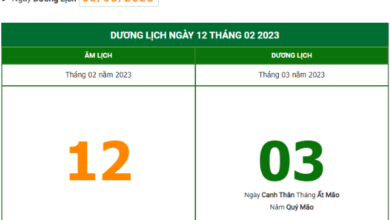Digital Dust Busters: Navigating the World of Cleaning Software for Homes

In the age of digital innovation, technology is transforming every aspect of our lives, including the way we manage our homes.
Keeping our living spaces clean and organized has evolved beyond traditional methods, thanks to the emergence of sophisticated cleaning software.
This article explores the realm of “Digital Dust Busters,” delving into the diverse landscape of cleaning software designed to streamline home maintenance and revolutionize the way we approach cleanliness.
The Evolution of Home Cleaning:
1. Traditional vs. Tech-Driven Cleaning:
The traditional image of a broom and dustpan has taken a backseat as technology introduces a wave of digital tools to assist in home cleaning.
Today, a new generation of cleaning software is redefining the way we navigate the cleanliness of our homes, offering solutions that go beyond mere chore management.
2. Smart Cleaning Devices:
The integration of smart cleaning devices, such as robotic vacuums, smart mops, and connected air purifiers, has paved the way for a more hands-free and efficient cleaning experience.
These devices often come with companion apps that allow users to schedule cleanings, monitor performance, and even control them remotely.
The synergy between hardware and software is creating a seamless and automated approach to digital dust busting.
Essential Cleaning Software for Homes:
1. Professional Cleaning Services Software:
For those seeking professional cleaning services, software solutions like CleanCore are transforming the way cleaning businesses operate.
This software streamlines everything from online booking to real-time dispatching and customer communication, providing a seamless and efficient experience for both service providers and clients.
2. Task Management Apps:
Task management apps like Todoist and Wunderlist have evolved to cater specifically to home cleaning needs.
These apps allow users to create customizable task lists for various cleaning chores, set reminders, and track their progress.
The intuitive interfaces of these apps ensure that managing cleaning tasks becomes a straightforward and organized process.
3. Scheduling Solutions:
Scheduling apps such as Tody take a dynamic approach to home cleaning schedules. By analyzing usage patterns and cleanliness levels, these apps intelligently adjust cleaning tasks.
The use of color-coded systems highlights areas that need immediate attention, offering users a visual guide to an optimized cleaning routine.
These scheduling solutions add a layer of adaptability to the cleaning process, ensuring efficiency and effectiveness.
4. Collaborative Platforms:
Family-centric apps like Cozi and OurHome extend their functionality to include collaborative cleaning features.
These platforms enable families to create and manage cleaning schedules collectively, fostering a sense of shared responsibility.
Reminders, task assignments, and even gamification elements in apps like OurHome make cleaning a collaborative and enjoyable effort.
5. Billing and Invoicing Tools:
Automated billing and invoicing tools such as QuickBooks and FreshBooks simplify the financial aspects of home cleaning services.
These solutions automate transactions, streamline payment processes, and reduce administrative overhead, ensuring a smooth and transparent financial experience for clients and service providers alike.
Navigating the Options:
1. Consider Your Cleaning Needs:
The first step in navigating the world of cleaning software is to consider your specific cleaning needs. Whether you’re an individual managing household chores or a business seeking software for professional cleaning services, understanding your requirements is crucial.
2. Explore User-Friendly Interfaces:
Opt for software solutions with user-friendly interfaces. Intuitive designs make it easier to navigate through features, set up cleaning schedules, and track tasks. The goal is to enhance the user experience and make the adoption of cleaning software seamless.
3. Look for Integration Capabilities:
Consider software that integrates well with other smart home devices and platforms. The ability to connect with smart cleaning devices ensures a more cohesive and automated approach to home cleaning, maximizing the potential of both software and hardware.
4. Trial Periods and Reviews:
Before committing to a particular cleaning software, take advantage of trial periods or free versions. Additionally, read reviews from other users to gain insights into the practical usability, effectiveness, and any potential limitations of the software.
5. Future-Proof Features:
Anticipate the future needs of your home cleaning routine. Look for software solutions that are committed to evolving with technological advancements.
Features such as AI integration, IoT connectivity, and other forward-looking capabilities will ensure that your chosen software remains relevant and effective in the long run.
The Future of Digital Dust Busters:
As we navigate the current landscape of cleaning software, the future promises even more advanced and integrated solutions.
1. Artificial Intelligence (AI) Assistance:
The integration of AI into cleaning software is expected to bring personalized assistance to users.
AI algorithms could analyze individual cleaning habits, preferences, and adjust schedules dynamically. This level of personalization ensures that cleaning routines are tailored to the unique needs of each user.
2. Internet of Things (IoT) Connectivity:
The future of digital dust busting involves a more connected and synchronized cleaning experience.
IoT integration will enable smart cleaning devices to communicate seamlessly with software solutions, optimizing schedules based on occupancy patterns and usage data.
This interconnected ecosystem will provide users with a more intelligent and automated home cleaning experience.
3. Enhanced User Interfaces and Virtual Reality (VR):
The evolution of cleaning software interfaces will likely include more intuitive designs and interactive features.
VR technology could provide users with virtual simulations of optimal cleaning techniques, creating a hands-on training experience.
These enhancements ensure that even those new to home cleaning can efficiently manage their tasks with confidence.
Conclusion:
Digital dust busters are not just about managing chores, they represent a transformative shift in the way we approach home cleaning. From task management to scheduling, collaborative platforms, and professional service solutions, the world of cleaning software offers a diverse range of options for every need. As we navigate this digital landscape, embracing the current innovations and anticipating future developments will ensure that our homes remain clean, organized, and in harmony with the technological advancements that define our era.



